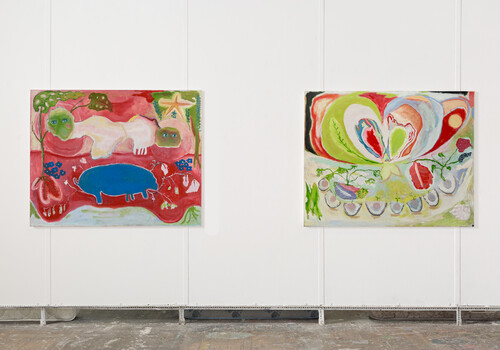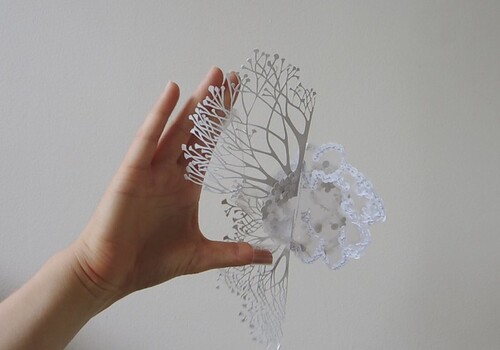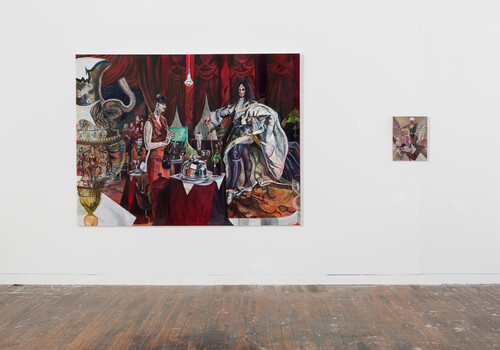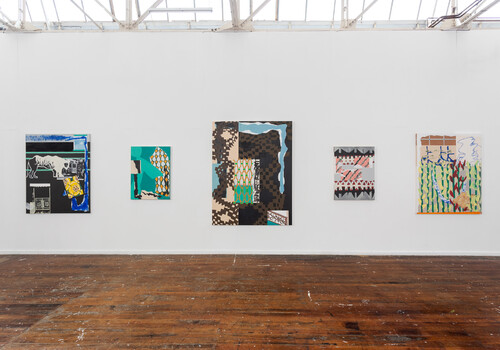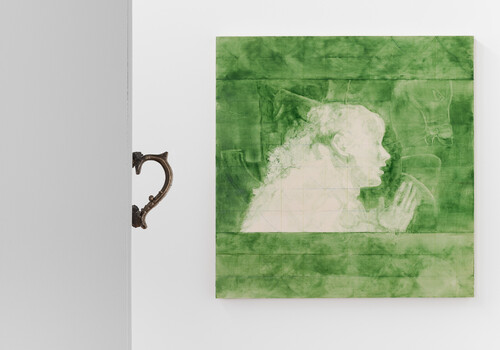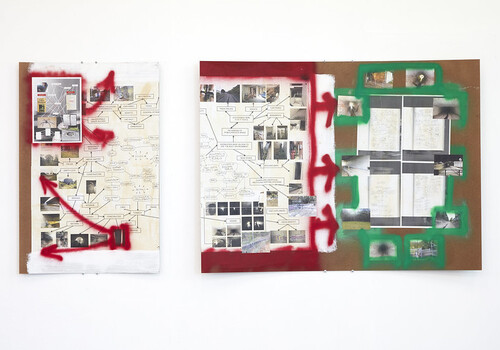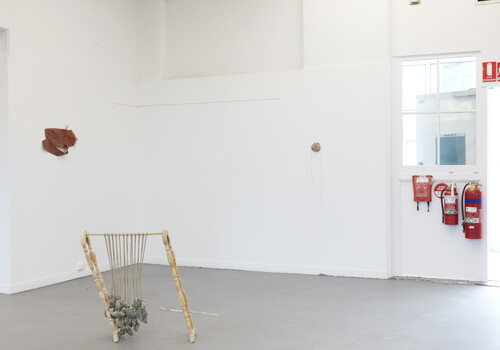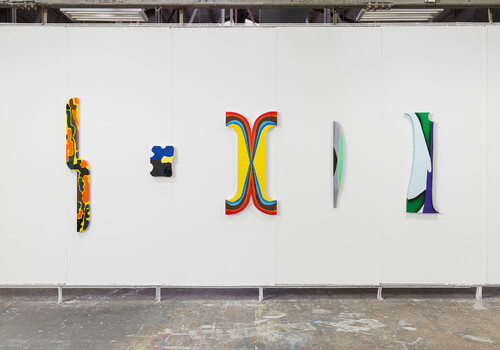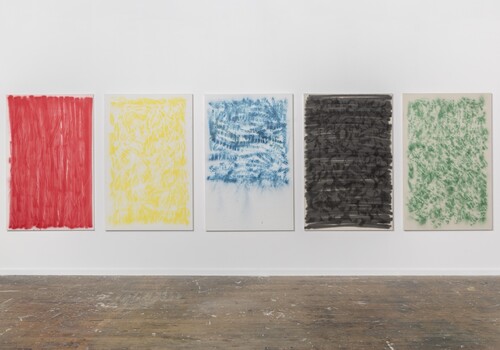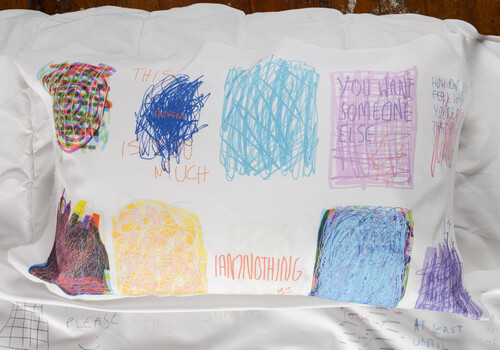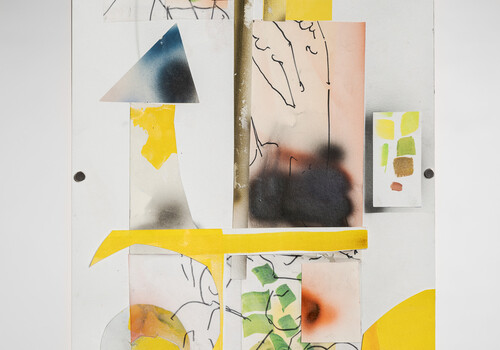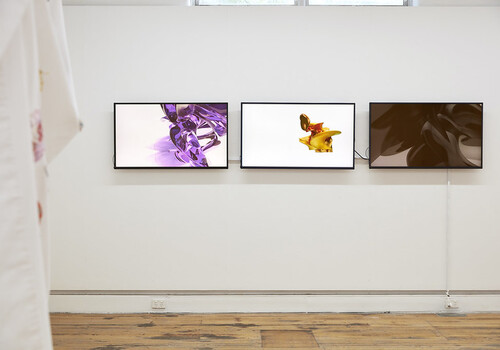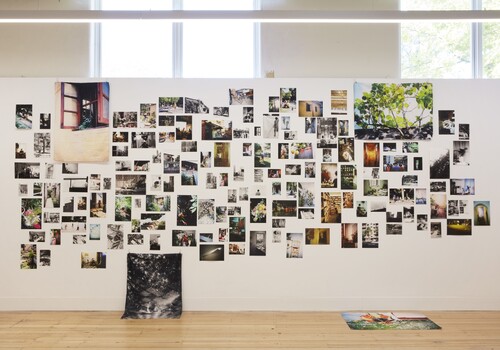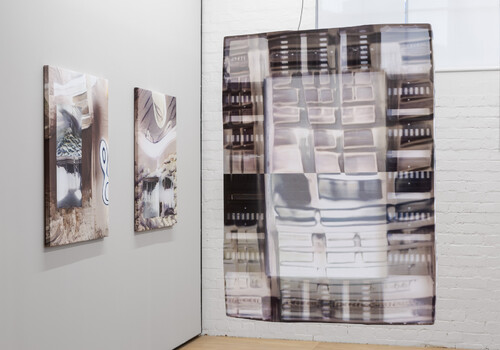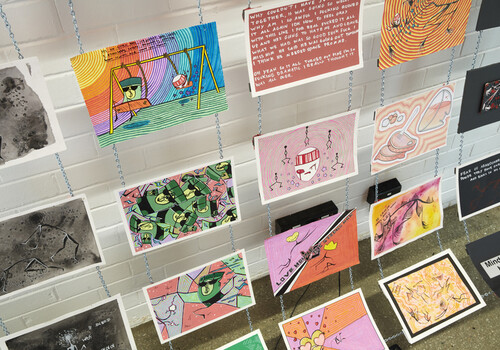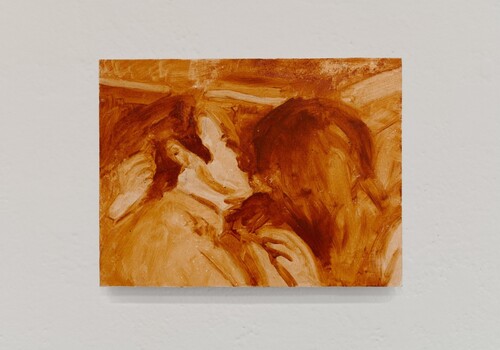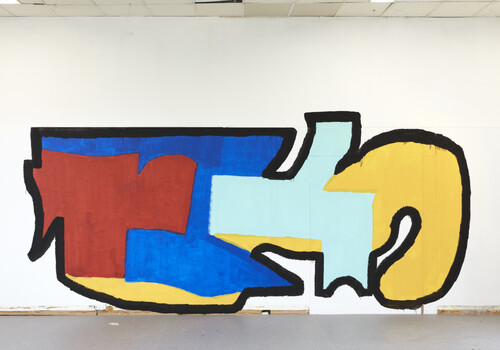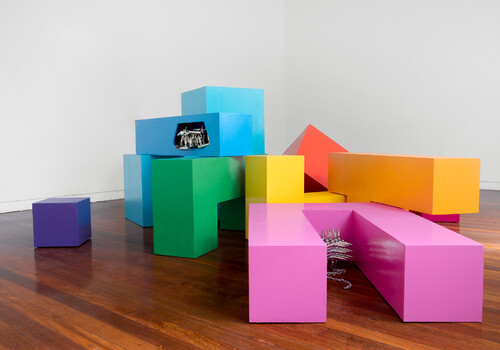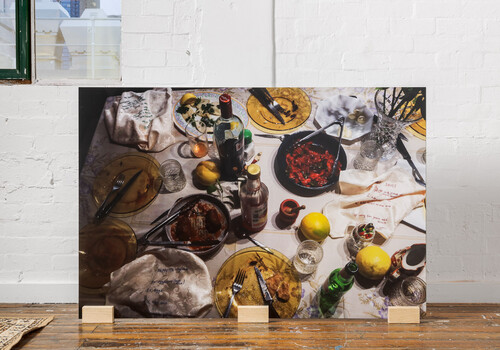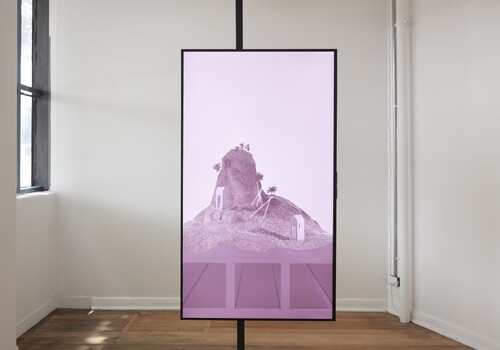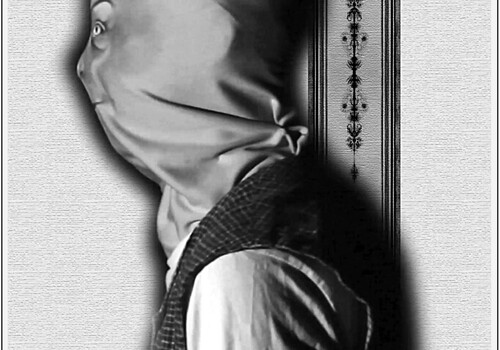Bachelor of Fine Art, MADA
By Alice Mawhinney
Walking round the Monash end-of-year show, four works caught my eye. It was about 3 weeks into lockdown 2.0 when Victorians started clearing out their hard rubbish and every suburban street became a smorgasbord of used chairs: self-portraits of their idiosyncratic owners. Leonie Leivenzon’s series Certain Chairs transforms junked chairs into sculptural artworks, opening up new possibilities and meanings for the once-functional objects. Images of the sculptures have been presented in the gallery as a stack of posters that viewers can take away (think Félix Gonzáles-Torres), presenting questions about the afterlifes of both objects and artworks.
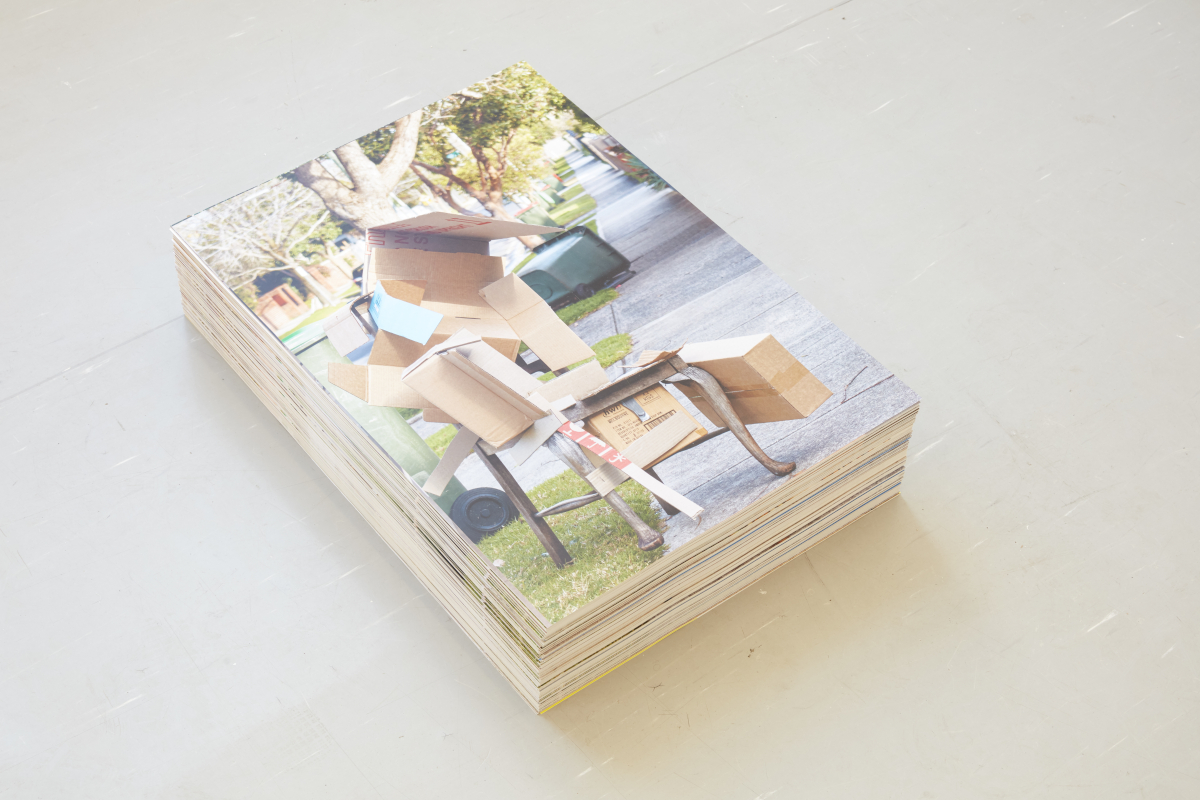
Rory Maley’s mapping works look like a mix between a Joseph Cornell box, an Aby Warburg mnemosyne atlas and a detective’s investigation board. A collage of photography, spray paint, flow charts and mind maps, the works attempt to organise the arbitrary, mapping space – public and private, internal and external. The spray paint makes you think urban, though perhaps as in construction and not graffiti. They’re a painted arrow marking the new lanes on a road freshly constructed by the artist, a post-internet way of consuming space: a bombardment of various random finds all connected through a behind-the-scenes network.
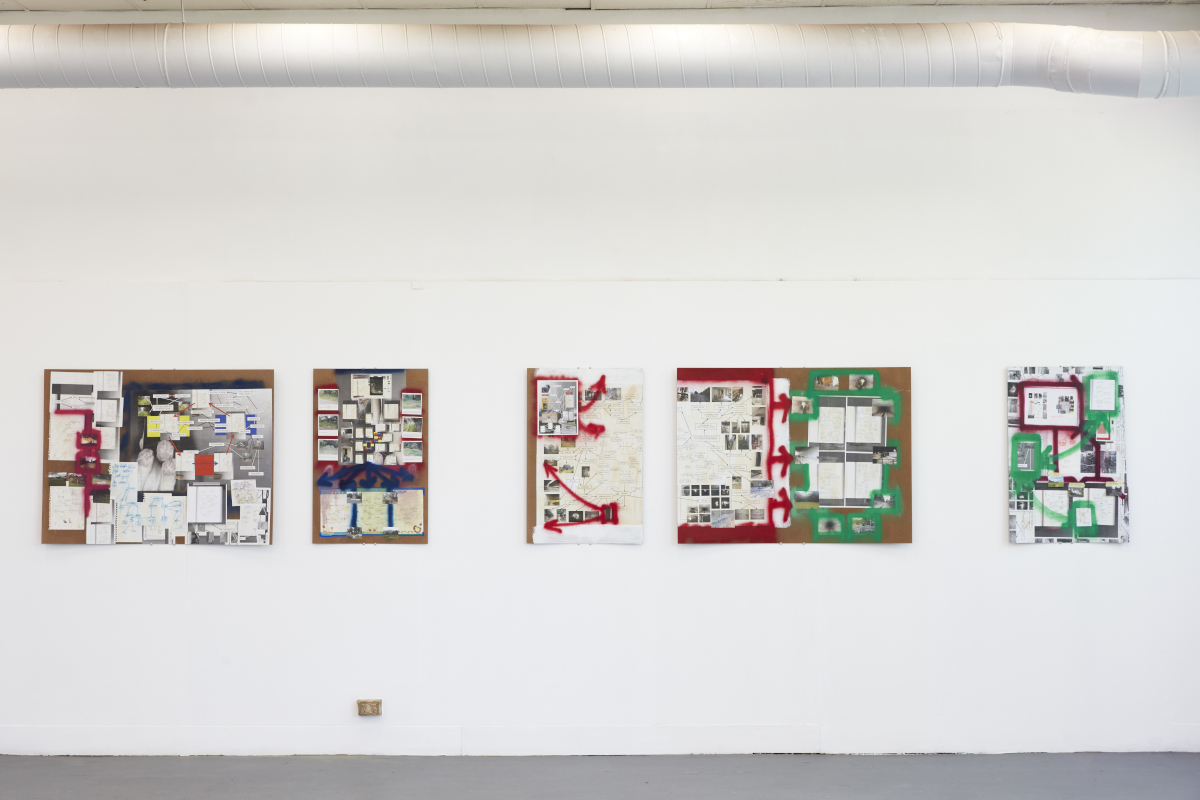
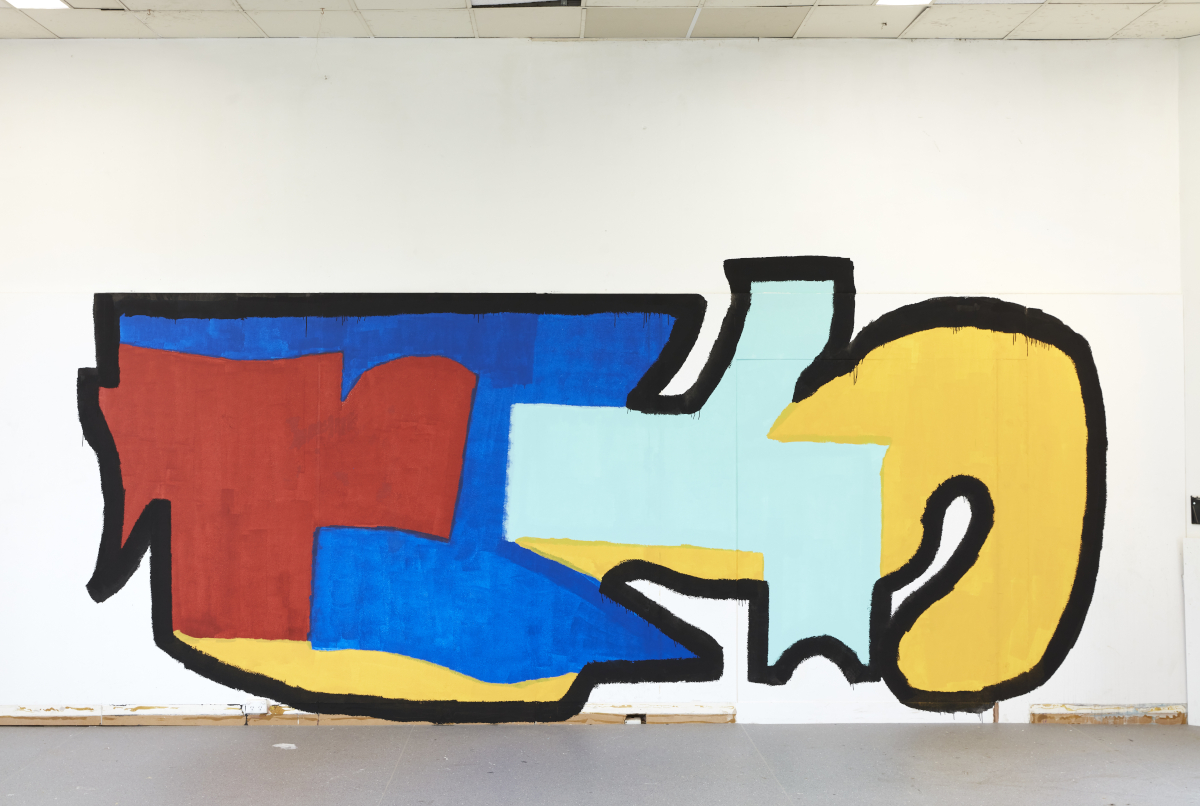
In the following room, Josh V.E.’s Composition in red, blues, yellow & black also makes me think of mapping, marking off different territories in block colours with a black line around its border. Josh’s work is akin to an urban mural. The abstract blocks of colour, title and drips speak to the western canon (namely modernism). There’s also a brief moment of passage by which the paint cheekily traverses the end of the installed plaster wall onto the gallery wall. It’s a witty move - a kind of transgressive and transcendental “Josh was here 2020” that immediately makes your inner bureaucrat wonder: was that allowed?
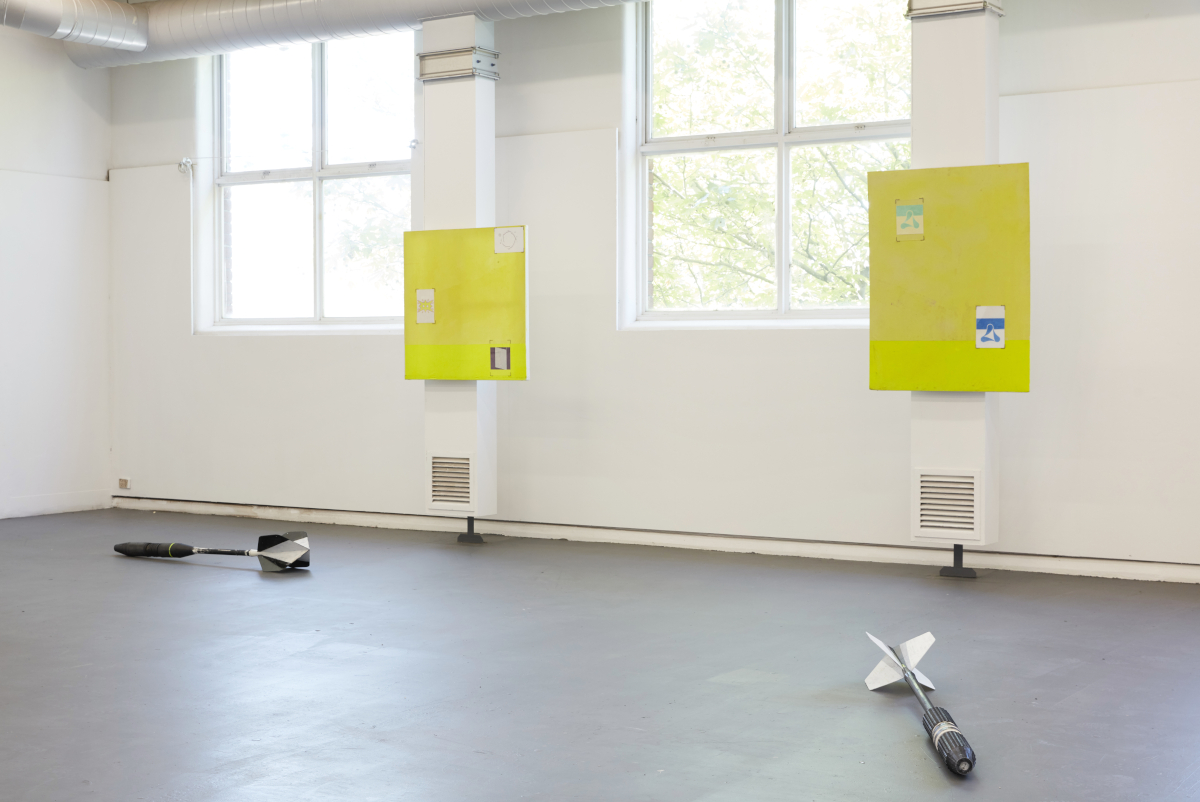
Admittedly, it was only on my second lap round the MADA space that Alexis Kanatsios’s works caught my interest. Kanatsios’ practice is concerned with materiality, form, cultural symbols and objects “ambiguous enough to allow and instigate continuous observation”. This shows. Two tennis-ball yellow canvases are hung next to a few large dart-like objects. On the canvases there are small rectangular symbols with corners framed by black lines that make your post-digital brain think QR code. Most notable is the work titled Open Design System. Squeezed into the corner above a sink as if the sink itself was an installation, a PSP sits at the top of the pyramid like structure: a shrine to the 2000s.

15 x 10 cm.
Considerations of space (urban/domestic, public/private), culture/society, the polysemous nature of objects and their form/function were all themes threading through the MADA grad show. From my urge to sift through the chair posters or pick up the javelin/dart object, to smirking at Josh’s cheeky wall marking, what struck me the most was the affective quality of the artworks: their agency, and their relational nature with the viewer. It’s just not the same through a 13-inch screen, is it?
Alice Mawhinney is a dancer/curator primarily concerned with embodied knowledge and relational aesthetics.
